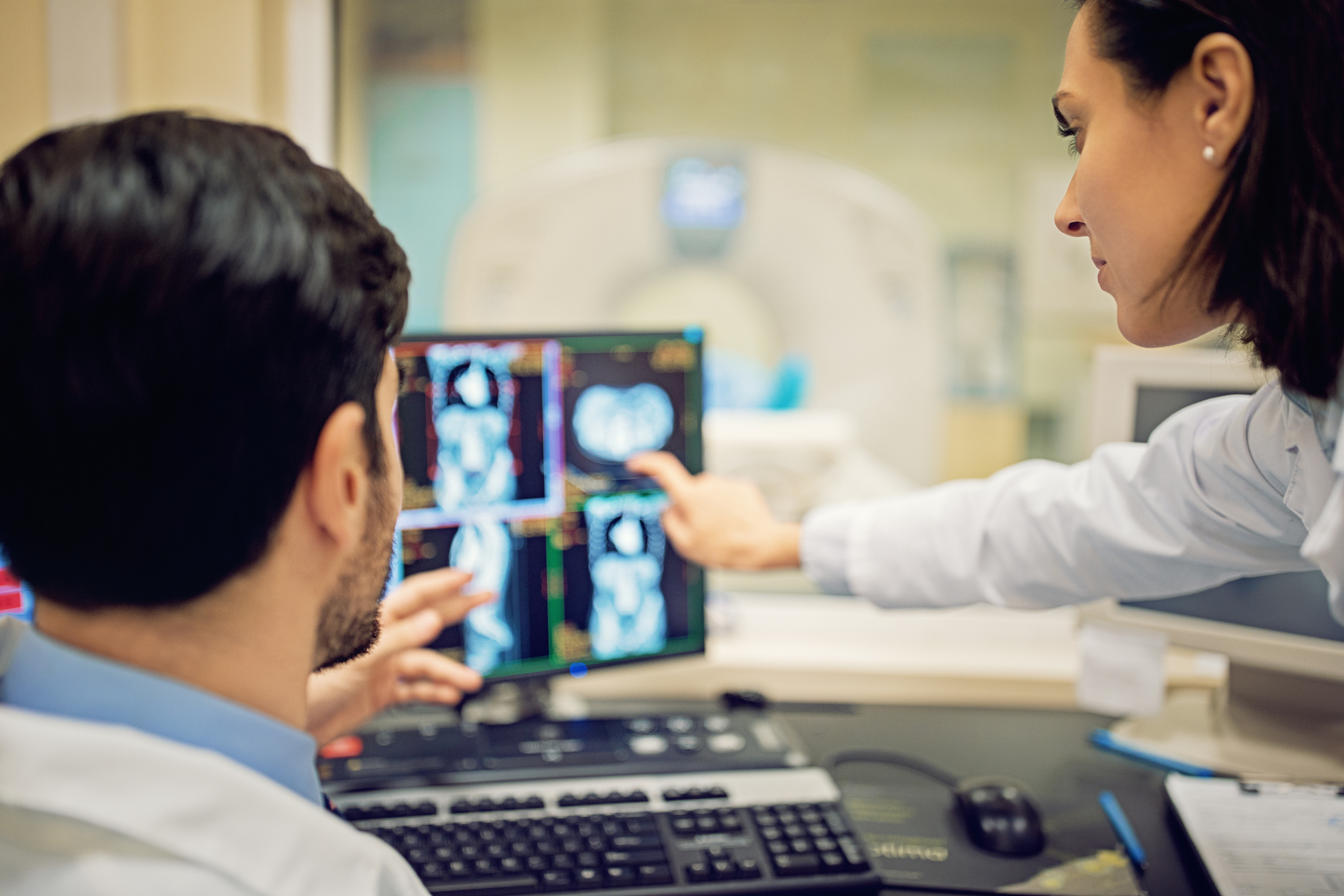
When you have a medical issue that requires diagnostic imaging, your doctor may recommend an MRI or CT scan. Both are non-invasive, low-risk ways of finding out what’s going on inside your body. One test might make more sense than the other, depending on your situation.
What is an MRI?
MRI stands for magnetic resonance imaging. It uses a magnetic field and radio waves to capture detailed images of the structures inside your body. MRIs are typically used to diagnose issues with the brain, heart, blood vessels, breasts, spine, and joints.
An MRI machine works by bouncing a constant magnetic field and pulsing radio frequencies off of the fat tissue and water molecules in your body. Radio waves transmit to a receiver, which translates them into images of the body that your doctor can use to diagnose health problems.
What is a CT Scan?
CT stands for computed tomography. You may have also heard of a CAT scan, which stands for computer axial tomography. This technology is one and the same; CT scan is simply a more modern term for CAT scan.
CT scans are a type of x-ray that captures multiple detailed pictures of the inside of your body, one layer at a time. A sophisticated x-ray machine transfers those images to a computer, which arranges each cross-sectional picture into a rotatable 3D model. CT scans are effective for diagnosing bone fractures, internal bleeding, tumors, and cancer.
MRI vs. CT Scan
Technology & Costs
To the untrained eye, MRI machines and CT scanners look very similar. They both have donut-shaped holes with a scan table sticking out of them. However, the technology used to achieve the scans is quite different.
MRIs are considered the superior option because magnets and radio waves provide more detailed imaging than x-rays. However, MRIs are more costly, and the scan takes about 20 minutes for each body area being imaged.
CT scans, which are the less expensive option, are more widely used than MRIs. They are also fast, taking less than 20 seconds to scan you from head to toe once you’re situated on the scan table. Be aware that some procedures require two passes across the body, which doubles the scan time.
Risks
While both imaging methods are considered safe, there are some risks involved.
MRIs have the following risks:
- Possible feelings of claustrophobia
- Chance of increased body temperature during long procedures
- Potential adverse reaction to any metal in the body (consult a doctor before receiving an MRI if you have artificial joints, an IUD, eye implants, or a pacemaker)
CT scans have the following risks:
- Harm to unborn babies
- Exposure to a low dose of radiation, just like ordinary x-rays
- Potential reaction to the dyes sometimes used to enhance the scan
Preparation & Procedure
What to expect from an MRI:
No preparation is required for an MRI. For your safety, simply tell your doctor if you are pregnant or have implants of any kind.
You must lie still while receiving an MRI. Since the procedure is much longer than a CT scan, this may be challenging for some patients.
Rest assured that an MRI is painless. You don’t feel the magnetic field or radio waves passing through your body, and there are no moving parts around you. However, MRI machines are loud, with repetitive tapping, thumping, and other noises. You may be offered earplugs or headphones to make the procedure more pleasant.
What to expect from a CT scan:
If you receive a scan without contrast materials, minimal preparation is necessary. Plan to wear comfortable, loose-fitting clothes that contain no metal zippers or snaps. You have the choice to change into a medical gown if you wish. You should also remove any body piercings, jewelry, glasses, and metal hair accessories.
In some cases, a dye or other contrast material is needed to make your blood vessels and organs easier to see in the x-ray images. If your CT scan requires this, be prepared to have an intravenous (IV) line gently inserted into your arm before the scan begins.
While the scan is in progress, you will hear clicking and whirring while the machine rotates around you, but there is no pain, and nothing comes in contact with your skin. Note that patients must weigh 500 pounds or less to receive a CT scan due to the scan table load limit.
Make the Most of Your MRI or CT Scan
Salem Radiology Consultants offers the most advanced MRI technology known as 3T. A “T,” or Tesla, is a measurement of the magnetic field strength. Before the introduction of the 3T machine, the standard was 1.5T.
Greater magnetic strength means our MRIs provide improved image quality with high-definition clarity. Scans also take less time with stronger magnets. In addition, our 3T MRI machine features a larger opening, making the scanning experience more pleasant, especially for patients with claustrophobia. There is no extra cost for receiving a higher-quality 3T scan, so it makes sense to take advantage of the best technology available.
Our CT scanner is equipped with advanced ASIR technology whichperforms scans with the lowest possible dose of radiation for drastically reduced radiation exposure and greater safety to our patients. Rest assured that the results are superior, so there’s no reason not to choose the low-dose option.
If you have any questions about which type of diagnostic imaging is right for you, or you’re ready to schedule your MRI or CT scan, please contact Salem Radiology Consultants at (503) 399-1262.
